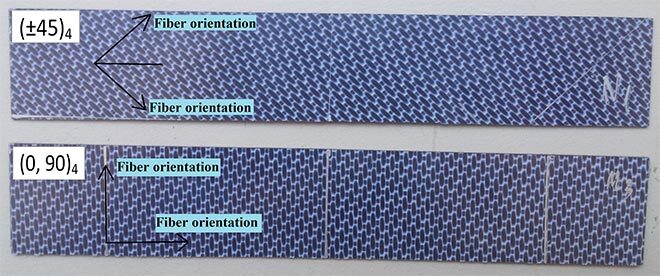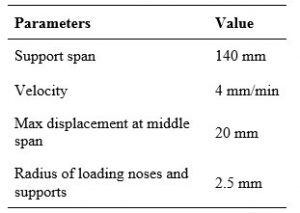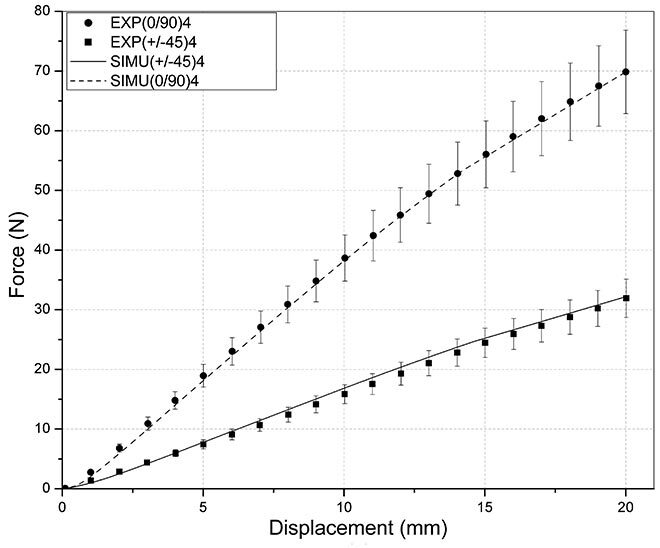Behavior Characterization of Large Dimension Composite Plate

The header image was bought on Istock.com and is protected by copyright.
The assembly process of a large flexible aerospace panel made of multilayered fiber-reinforced composites is highly complex due to its nonlinear material behavior. Therefore, the aim of our research work is to characterize the mechanical behavior of fiber reinforced composites applied to inspection and assembly. Keywords: Mechanical characterization; fiber-reinforced composites; assembly process, finite element method.
Introduction
The quality control of their products is one of the main aspects that manufacturing companies must consider in technological developments. At the end of a manufacturing process, the produced part must satisfy a level of required tolerance. In aerospace and automotive industries, flexible parts with large dimensions in relation to their thickness may have different forms due to geometric variations or gravity loads. For example, an aircraft skin panel may be slightly warped in free-state, making it potentially unacceptable for assembly [1]. Therefore, one of the most important issues in quality control is to inspect the geometry of flexible parts prior to assembly. Special fixtures are needed to compensate for shape changes of flexible parts. This process is usually costly and very time-consuming. For instance, Figure 1a and Figure 1b show an aerospace panel in free-state and in a constrained state on its fixture array.

Figure 1. An aerospace panel: (a) in free-state, and (b) constrained on its inspection fixture array [2]
It is widely considered that a virtual inspection method, which is usually performed by numerical simulations to compensate for deformation of flexible parts in free-state, could lead to significant time and cost savings. Nowadays, the use of parts made of composite materials is gradually increasing, especially in the aerospace industry. However, up to now, no virtual inspection method was developed for flexible composite parts, at least to our knowledge. The reason is that the deformation behavior of flexible composite parts is much more complex than that of linear elastic materials like aluminum. Therefore, a deep understanding of the behavior of flexible composite parts is not only very challenging, but also crucial to various applications, such as developing specific virtual inspection methods.
Problem and Solution
Thin orthotropic materials like fiber reinforced composites can be described as a laminar structure with four independent in-plane elastic parameters (Young’s modulus and , shear modulus , Poisson’s ratio ). However, during its assembly process a flexible part undergoes large deformations, which makes the constitutive properties of the material change considerably. Consequently, this model is no longer valid for assembly processes. Instead, hyperelasticity could provide a framework for modelling large anisotropic deformations [3-6].
Based on this approach, we propose a hyperelastic material model being capable of capturing the behavior of flexible fiber-reinforced composites (see Equation (17), Vu et al. [7]). The parameters of this model were identified through experimental characterization work.
Characterization Work
The material model parameters are obtained by curve-fitting when minimizing the difference between the experimental bending test data and the numerical simulation.
Experimental Testing

Figure 2. Test specimens

Figure 3. Three-point bending test using the MTS machine
The composite material used in this study is a four-layer consolidated plate of polyphenylene sulphide (PPS) matrix and carbon fiber fabrics (CF/PPS). The fiber volume fraction ( ) is 50%. The total thickness of the four-layer laminate is about 1.24 mm (0.31 mm per layer). Specimens of dimensions 300 mm × 34 mm × 1.24 mm were fabricated with two different types of fiber orientation configurations: (1) four layers of and (2) four layers of as shown in Figure 2.
Three-point bending tests were performed on a MTS testing machine with displacement control as presented in Figure 3. Five tests were conducted for each configuration as summarized in Table 1.
Table 1. Specimen and test parameters

Results
Figure 4 shows the comparison between numerical results and experimental data. We can see a good correlation between predicted results and experimental data for our proposed material model.

Figure 4. Comparison between numerical results and experimental data
Results showed that relative errors between numerical results and experimental data were quite small, with the relative error = 0.0160. It turns out that the mechanical response of the proposed material model was well suited for the mechanical behavior of multilayered CF/PPS in the three-point bending test.
Conclusion
This paper presents a hyperelastic material model used to assess the mechanical behavior of multi-layer fiber-reinforced composite sheets. The material parameters were identified through experimental characterization work. Results showed that:
- Proposed models are appropriate for the CF/PPS multi-layer composite material.
- The material parameters of proposed models can be identified in three-point bending tests with two different types of fiber orientation configurations.
Additional information
For more information on this research, please refer to the following article:
Vu, N.-H.; Pham, X.-T.; François, V; Cuillière, J.-C. 2018. “Characterization of multilayered carbon-fiber–reinforced thermoplastic composites for assembly process”. Journal of Thermoplastic Composite Materials.

Figure 4. Comparison between numerical results and experimental data


